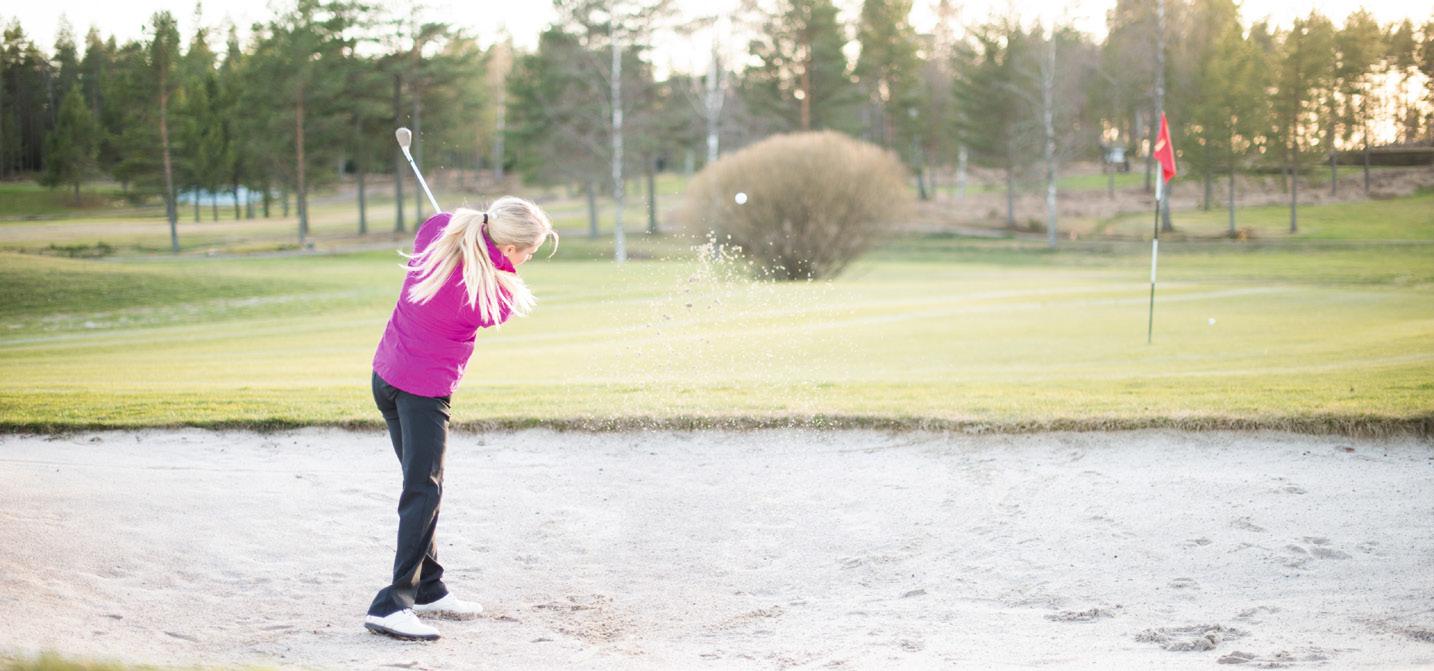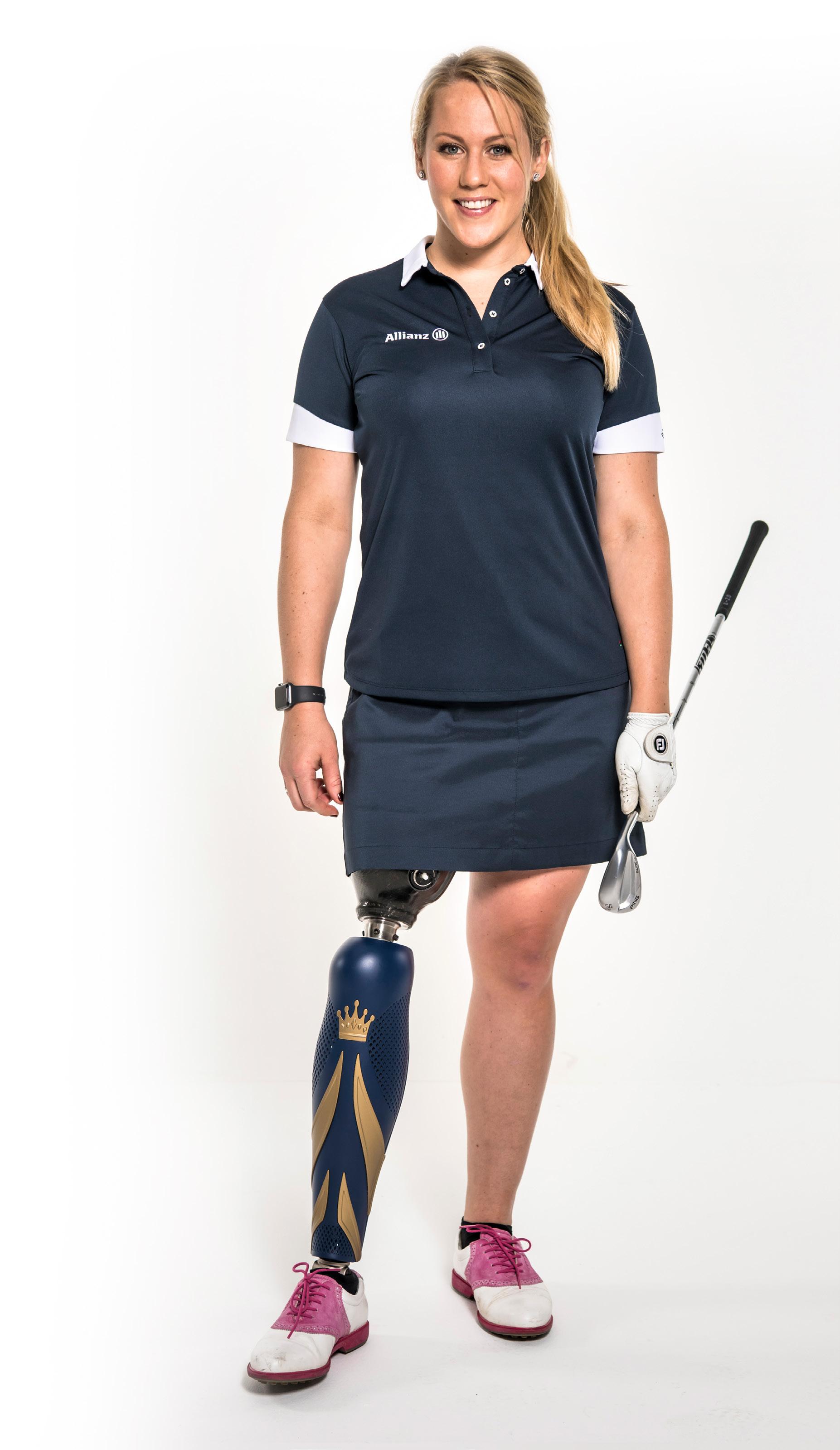
5 minute read
When the perfect shot ends up in a divot Mind games – how to deal with difficulties and focus on the things you can influence
from Upswing 2021
by Upswing
When the perfect shot ends up in a divot
CREATING NEW POSSIBILITES AND OPPORTUNITITES IN CHALLENGING TIMES
Advertisement
Words Caroline Mohr
Many of us had a lot of expectations and plans for 2020/21. The past year truly tested our ability to become more flexible and redesign our plans to move forward. It’s challenging for many and requires effort to make adjustments, adapting to the change and bounce back.
We all know that feeling of a perfect ball flying through the air. Timing is impeccable, the ball strikes middle of the clubface and flies towards the target. You enjoy your finish and bend to pick up your tee. You walk towards your bag with proud steps and sense the admiration from your golf friends. That was a great ball. You head towards the middle of the fairways, expecting the perfect position. You may have read about my story in the previous edition of ‘Upswing’. I was a golf professional, fulfilling my dream to play on tour when I was unexpectedly diagnosed with cancer. I had to get my leg amputated in order to survive. I had planned, learned and practiced my whole life for the dream of being a golf pro and suddenly, I had to redesign my future. It felt like I had hit the perfect shot, only to end up in a divot. I was devastated and didn’t know if there was a
With excitement, a bit of adrenalin and quick steps, you come closer to the ball and realise that it ended up in a divot. The risk of ending up in a divot mid fairway is rather small, however, it is there. Yet, golfers are prepared and ready to invest time to play the game.
So, we play the game. We plan, learn and practice. We execute and enjoy. We succeed and cope with the moments of falling flat. The resilience muscle of a golfer is naturally inbuilt throughout the process and may be your greatest resource in times of change. way forward. Like with all changes, there are different phases we go through – after a state of chaos and condemnation, we start to elaborate on the change and then form a clear strategy, which is helping us to find acceptance and inspiration to move forward and thrive.
What, if there is a way to cope with change more efficiently? What, if we can speed up the journey through the phases – from devastation to acceptance – and, as a result, lose less time and energy throughout the process? These are questions I have been obsessed with answering. Today, I am a Mindset Trainer, Keynote speaker and NLP Trainer. Back in 2011, I made my comeback to professional golf at the Swedish Championship only two and a half months after the amputation. This may seem like a short time to cope with the aftermath of an amputation and getting ready to play on tour with one leg less. But the truth is, those two and a half months felt like a long time.
How could I make a comeback that fast? Way too many times have I hit that perfect shot, only to realise I ended up in a divot. However, it has taught me an incredible life lesson. In order to let go of arising frustration and energy loss over the bad lie, I am forced to focus on something else – on the possibilities. What are my choices in this moment? What can I actually influence?
I can choose how I breathe in this moment, what club I choose to hit the ball with, I can fully redesign my plan from this new position, I can work on my body posture, I can learn a new shot and I can get a little creative to get myself out of there.
In an instant, I navigated my focus towards simple, yet powerful things I could influence. I became aware because I pointed them out consciously. This might be the most powerful practice to incorporate in your life in order to make changes efficiently.
Many golfers love to increase their swing speed to gain more power and hit further. What, if it’s possible to do exactly that with your mind? To get more efficient, reset from ‘bad lies’ and changes to gain more momentum for action and thrive far beyond your goals? The mind is so powerful, yet many underestimate its greatness.
Staying consistent to the practice of finding good within every moment does not mean you suppress what you experience to be
tough, it just means that you train your mind to be more flexible and efficient to navigate towards what gives you more energy, less headache and accessible solutions. This is a way to change your experience, from though to easy, from heavy to light.
Since the day I lost my leg, my attention has been heavily more focused on what I can do and create, rather than what I can not. Challenging myself to find out what’s possible broke the barriers for what many thought was possible to achieve in just two and a half months. When I realised that I was able to maintain stability and balance throughout my swing just as good on one leg as with two legs, I committed to practice this skill every single day and eventually became really good at it. My confidence increased and I could start to imagine playing golf again on one leg. Other people couldn’t imagine the vision I had, as they were not on my journey. But if they had also paid attention consciously to their foot posture, balance and strength every day for two and a half months, they would have experienced the progress, the increased balance and eventually created mental images of their new possibilities.

Golfers have an advantage in that they unconsciously train resilience on the course every day. In order to make this truly translatable to business and life, and use it as a powerful skill to go from devastation to acceptance, I identified four essential steps: • Step 1: Navigate your focus to what you can influence. • Step 2: Commit to practice this daily. • Step 3: Celebrate progress to create new mental images of what’s possible. • Step 4: Execute actions consistently in this direction. With the future in front of you, what is the first step you want to take in order to enable greater impact, achieve clarity and flexibility, turning challenges into real possibilities? And next time you end up in a divot, what will you choose to do?










